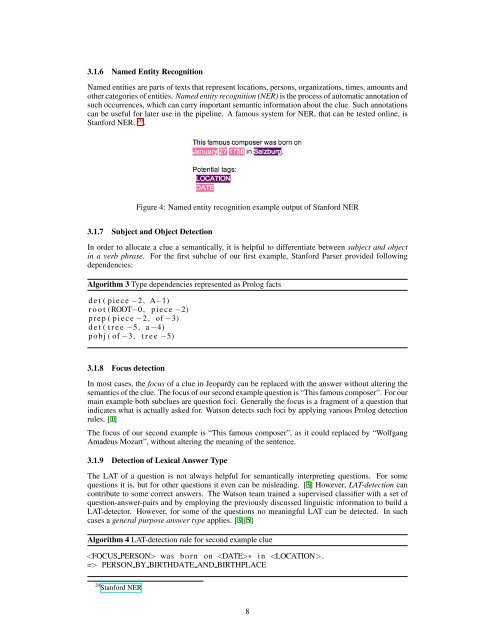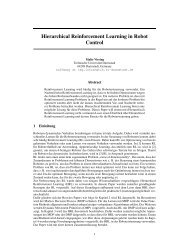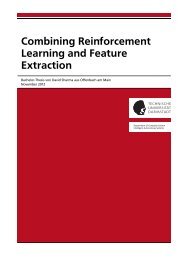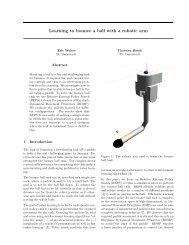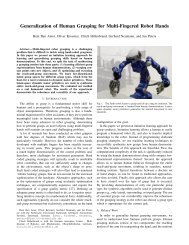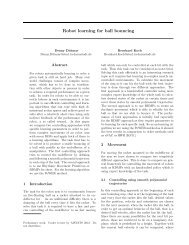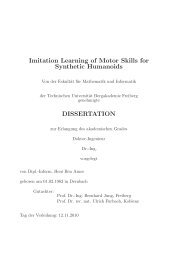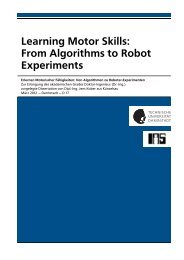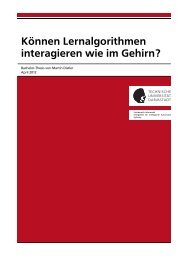Lifecycle of a Jeopardy Question Answered by Watson DeepQA
Lifecycle of a Jeopardy Question Answered by Watson DeepQA
Lifecycle of a Jeopardy Question Answered by Watson DeepQA
You also want an ePaper? Increase the reach of your titles
YUMPU automatically turns print PDFs into web optimized ePapers that Google loves.
3.1.6 Named Entity RecognitionNamed entities are parts <strong>of</strong> texts that represent locations, persons, organizations, times, amounts andother categories <strong>of</strong> entities. Named entity recognition (NER) is the process <strong>of</strong> automatic annotation <strong>of</strong>such occurrences, which can carry important semantic information about the clue. Such annotationscan be useful for later use in the pipeline. A famous system for NER, that can be tested online, isStanford NER. 20 .Figure 4: Named entity recognition example output <strong>of</strong> Stanford NER3.1.7 Subject and Object DetectionIn order to allocate a clue a semantically, it is helpful to differentiate between subject and objectin a verb phrase. For the first subclue <strong>of</strong> our first example, Stanford Parser provided followingdependencies:Algorithm 3 Type dependencies represented as Prolog factsd e t ( p i e c e −2, A−1)r o o t (ROOT−0, p i e c e −2)prep ( p i e c e −2, <strong>of</strong> −3)d e t ( t r e e −5, a −4)pobj ( <strong>of</strong> −3, t r e e −5)3.1.8 Focus detectionIn most cases, the focus <strong>of</strong> a clue in <strong>Jeopardy</strong> can be replaced with the answer without altering thesemantics <strong>of</strong> the clue. The focus <strong>of</strong> our second example question is “This famous composer”. For ourmain example both subclues are question foci. Generally the focus is a fragment <strong>of</strong> a question thatindicates what is actually asked for. <strong>Watson</strong> detects such foci <strong>by</strong> applying various Prolog detectionrules. [1]The focus <strong>of</strong> our second example is “This famous composer”, as it could replaced <strong>by</strong> “WolfgangAmadeus Mozart”, without altering the meaning <strong>of</strong> the sentence.3.1.9 Detection <strong>of</strong> Lexical Answer TypeThe LAT <strong>of</strong> a question is not always helpful for semantically interpreting questions. For somequestions it is, but for other questions it even can be misleading. [3] However, LAT-detection cancontribute to some correct answers. The <strong>Watson</strong> team trained a supervised classifier with a set <strong>of</strong>question-answer-pairs and <strong>by</strong> employing the previously discussed linguistic information to build aLAT-detector. However, for some <strong>of</strong> the questions no meaningful LAT can be detected. In suchcases a general purpose answer type applies. [3][5]Algorithm 4 LAT-detection rule for second example clue was born on ∗ i n .=> PERSON BY BIRTHDATE AND BIRTHPLACE20 Stanford NER8


